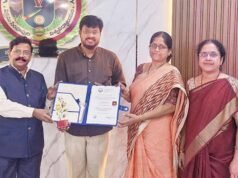Hyderabad: Even after the conclusion of the trial period at Tarnaka junction, confusion persists among commuters and the traffic police remains uncertain about the future course of action due to slip feedback received from people. As traffic congestion has eased at Habsiguda crossroads and Secunderabad because of Tarnaka traffic signals, the police have decided to keep the junction open till schools are reopened in June.
“As we have opened the junction after a decade, we have seen mixed reactions from the public and the junction will be opened till there is a conclusive decision,” said a senior police officer.
The junction was opened on a trial basis from April 18 to May 2. Though traffic cops had informed the public and residents about the opening of the junction for several days, people still remain confused.
While commuters coming from Lalapet and Osmania University are allowed to take right and straight from the junctions, the commuters from Secunderabad to Uppal and the others are still confused and are waiting for the green light, hindering the other commuters.
Speaking to Deccan Chronicle, Nallakunta traffic inspector M. Satyanarayana said, “Opening is not really the best decision for those who commute long distance but for those who travel short distance are easily crossing through the junction and are experiencing the clear way.”
He said a person travelling from Keesara to Banjara Hills or even further was habituated to take the U-turn and would prefer to do so rather than waiting for a signal. “With most commuters waiting at Tarnaka junction, traffic flow has eased at Habsiguda and towards Secunderabad. So the congestion at the other signals have comparatively decreased.”
Hyderabad traffic police conducted a poll on ‘X’ (formerly Twitter) seeking public opinion. However, the results showed that people were evenly divided about the opening of the junction. The police said that the junction will be open for some more time till there is a comprehensive understanding on it and will function till schools resume.







